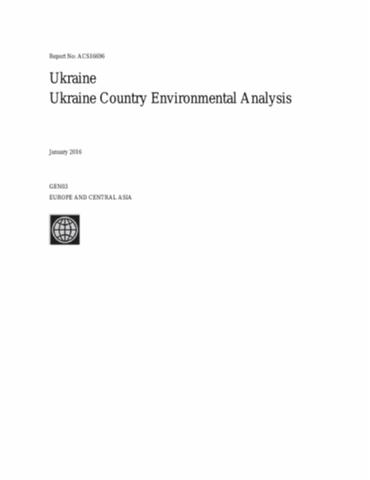Resource information
The objective of the Country Environmental Analysis (CEA) is to assess the adequacy and performance of the policy, legal, and institutional framework for environmental management in Ukraine, in light of the decentralization process of environmental governance and wider reform objectives, and to provide recommendations to government to address the key gaps identified. Ukraine is the second largest country in Europe and has a population of 43 million, the majority of whom live in urban areas. It is a lower middle income country, with the services, industry and agriculture sectors being main contributors to the country’s Gross Domestic Product (GDP). Ukraine faces a number of environmental challenges, as identified in its National Environmental Strategy 2020 (NES). Key among these are: air pollution; quality of water resources and land degradation; solid waste management; biodiversity loss; human health issues associated with environmental risk factors; in addition to climate change. The scope of Ukrainian environmental legislation is quite broad and comprehensive (more than 300 legal acts) and covers most areas of environmental protection and natural resources management. However, the environmental legislation faces a number of weaknesses:The environmental legislation is largely declaratory in nature and does not have all the essential enforcement mechanisms for the implementation of legal acts and international agreements; Many of the acts are not coordinated with each other; and Legislation undergoes limited analysis of its impact—for example, no in-depth analysis such as Regulatory Impact Analysis is conducted for proposed pieces of legislation.


